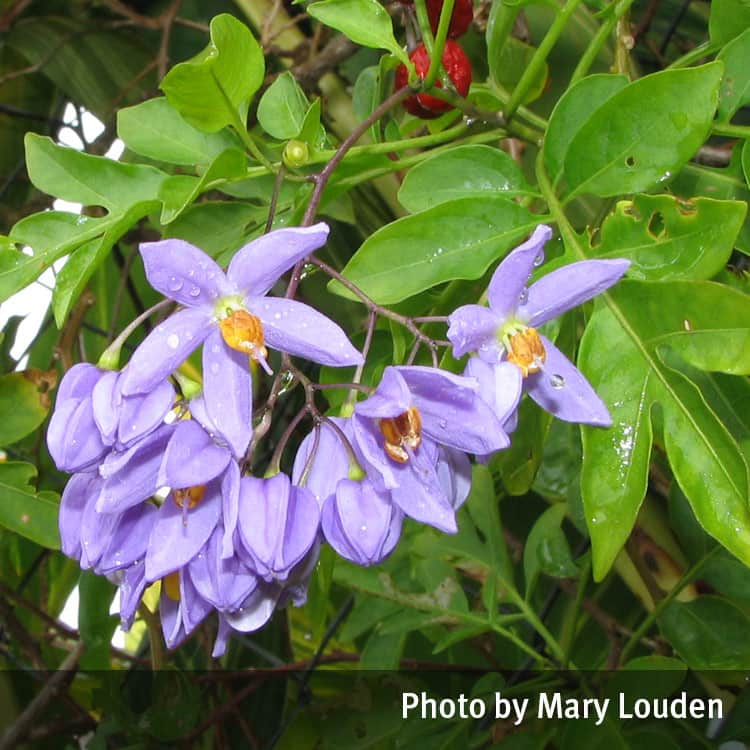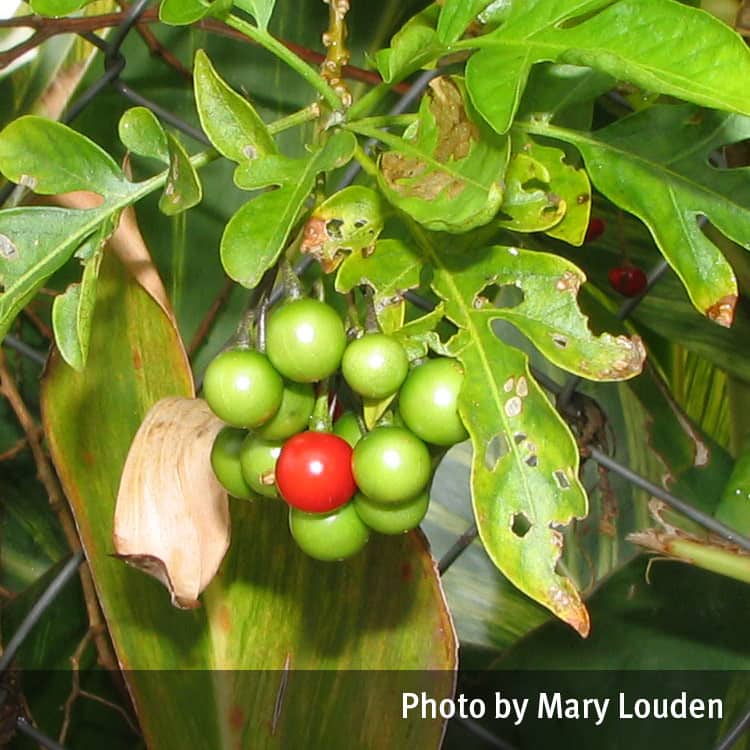Description
A perennial vine cultivated as an ornamental and often found growing in moist gullies and clearings near residential areas.
The flowers occur in pendant clusters. Flowers are star-shaped, 2–3cm in diameter, blue to purple, with a tuft of yellow stamens in the centre.
The leaves are alternating on the stem, 13cm long and 11cm wide, and deeply divided into three to nine irregularly shaped segments.
Toxicity
Symptoms
All parts of the plant are poisonous. The leaves and fruit may cause gastro-intestinal irritation, nausea and diarrhoea.
Images


Details
Common name: Brazilian nightshade
Botanical name: Solanum seaforthianum
Other common names: –
Family: Solanaceae
General description: A perennial vine cultivated as an ornamental and often found growing in moist gullies and clearings near residential areas.
Flowers: The flowers occur in pendant clusters. Flowers are star-shaped, 2–3cm in diameter, blue to purple, with a tuft of yellow stamens in the centre.
Leaves: The leaves are alternating on the stem, 13cm long and 11cm wide, and deeply divided into three to nine irregularly shaped segments.
Fruit/Berries: Fruit are globular, succulent, shiny berries, bright red to scarlet when ripe, about 1cm in diameter with numerous seeds inside.
Other: The sap is clear.